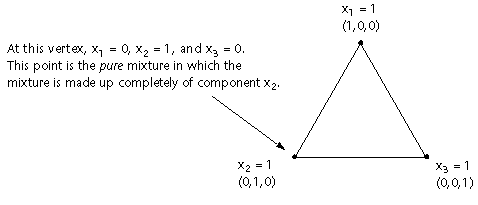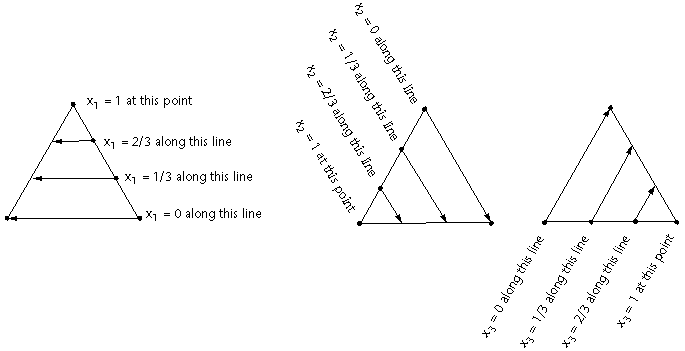main topic
Triangular coordinate systems allow you to visualize the relationships between the components in a three-component mixture. In a mixture, the components are restricted by one another in that the components must add up to the total amount or whole. Triangular coordinate systems in this section show the minimum of the x1, x2, and x3 components as 0, with the maximums at 1.
The following illustration shows the general layout of a triangular coordinate system. The components in mixture models are referred to in terms of their proportion to the whole, with the whole as 1. The vertices of the triangle represent pure mixtures (also called single-component blends). In pure mixtures, the proportion of one component is 1 and the rest are 0.

Any points along the edges of the triangle represent blends where one of the components is absent. The illustrations below show the location of different blends.

Now let's look at some points on the coordinate system.

Each location on the triangles in the above illustrations represents a different blend of the mixture. For example,